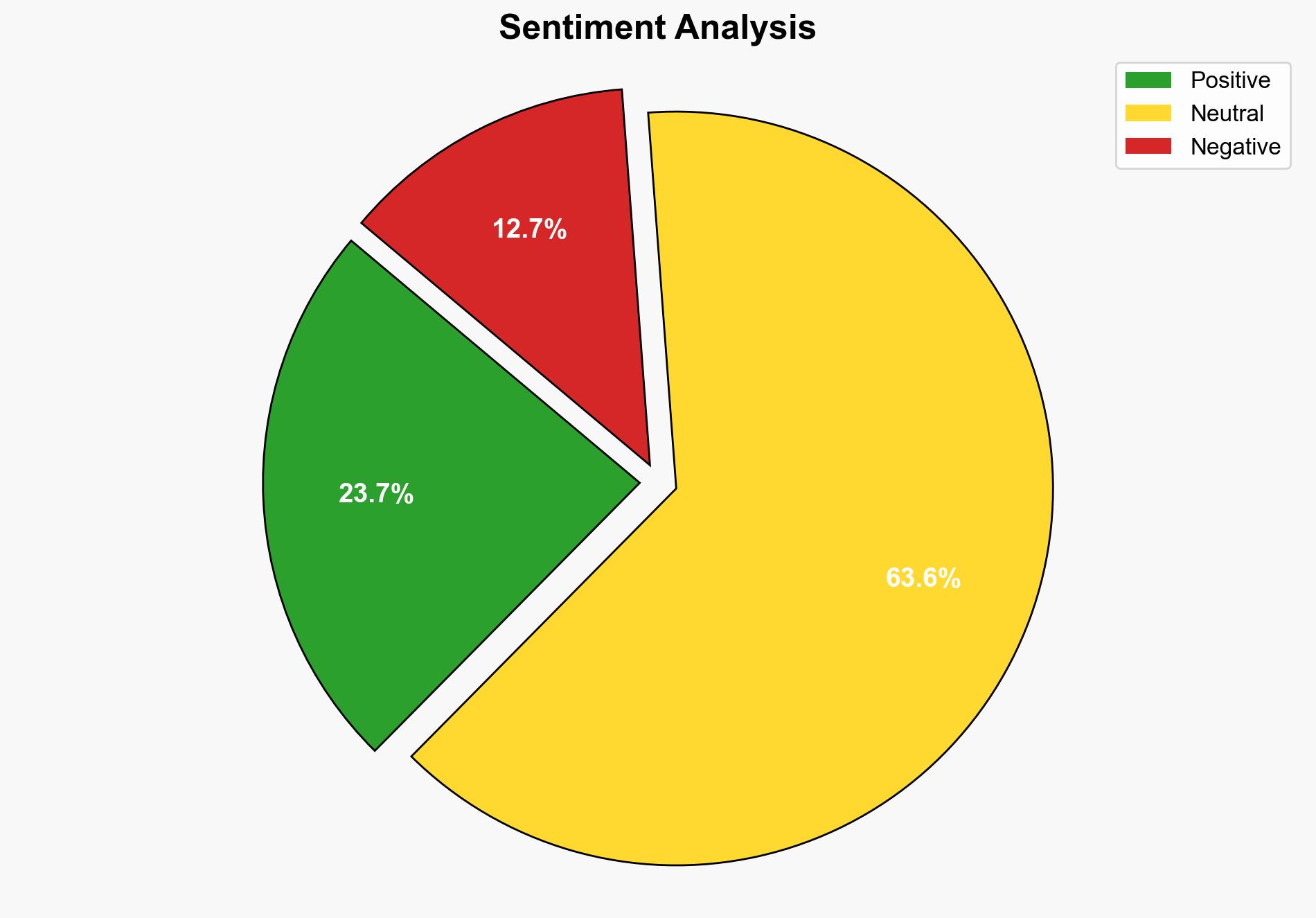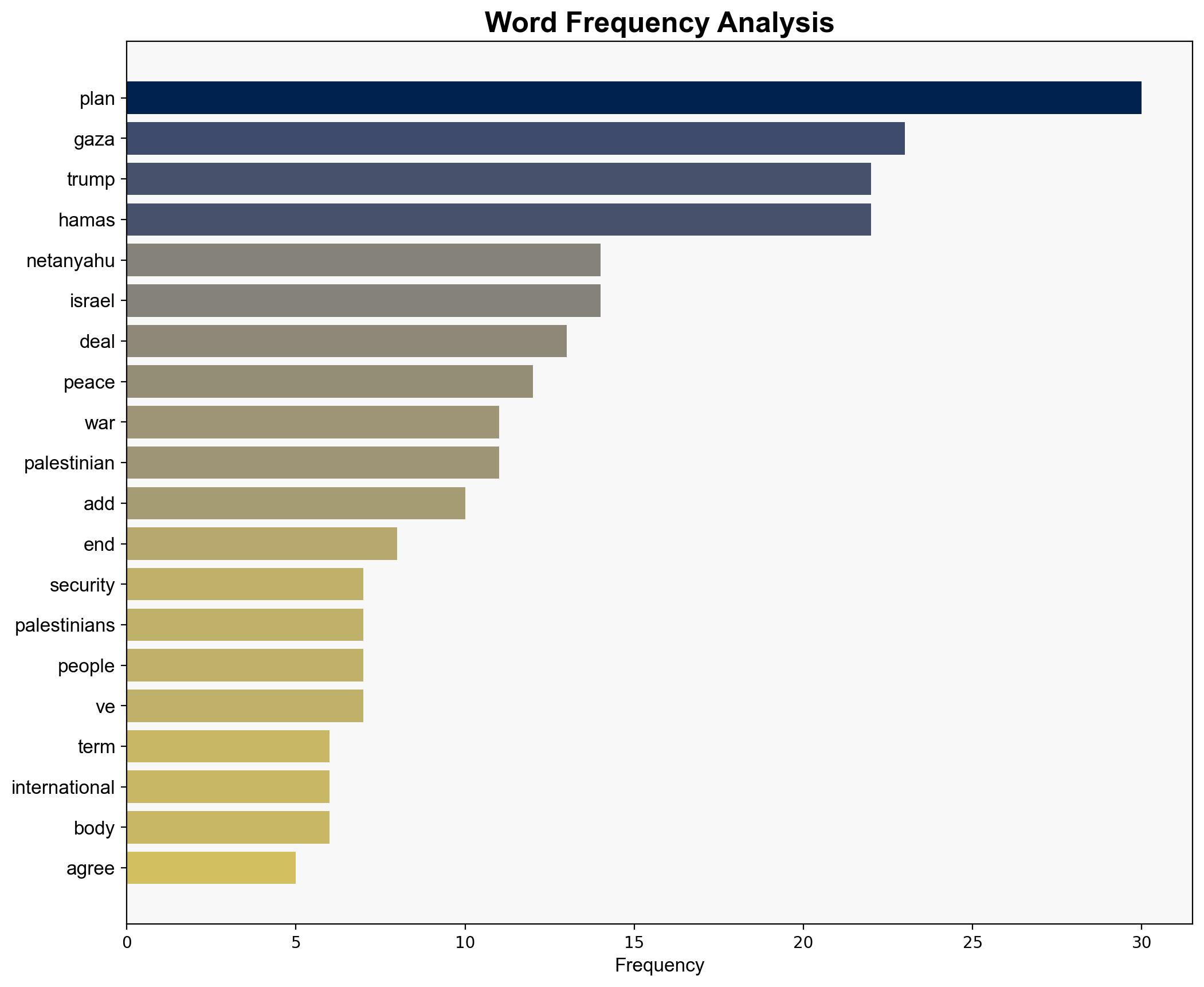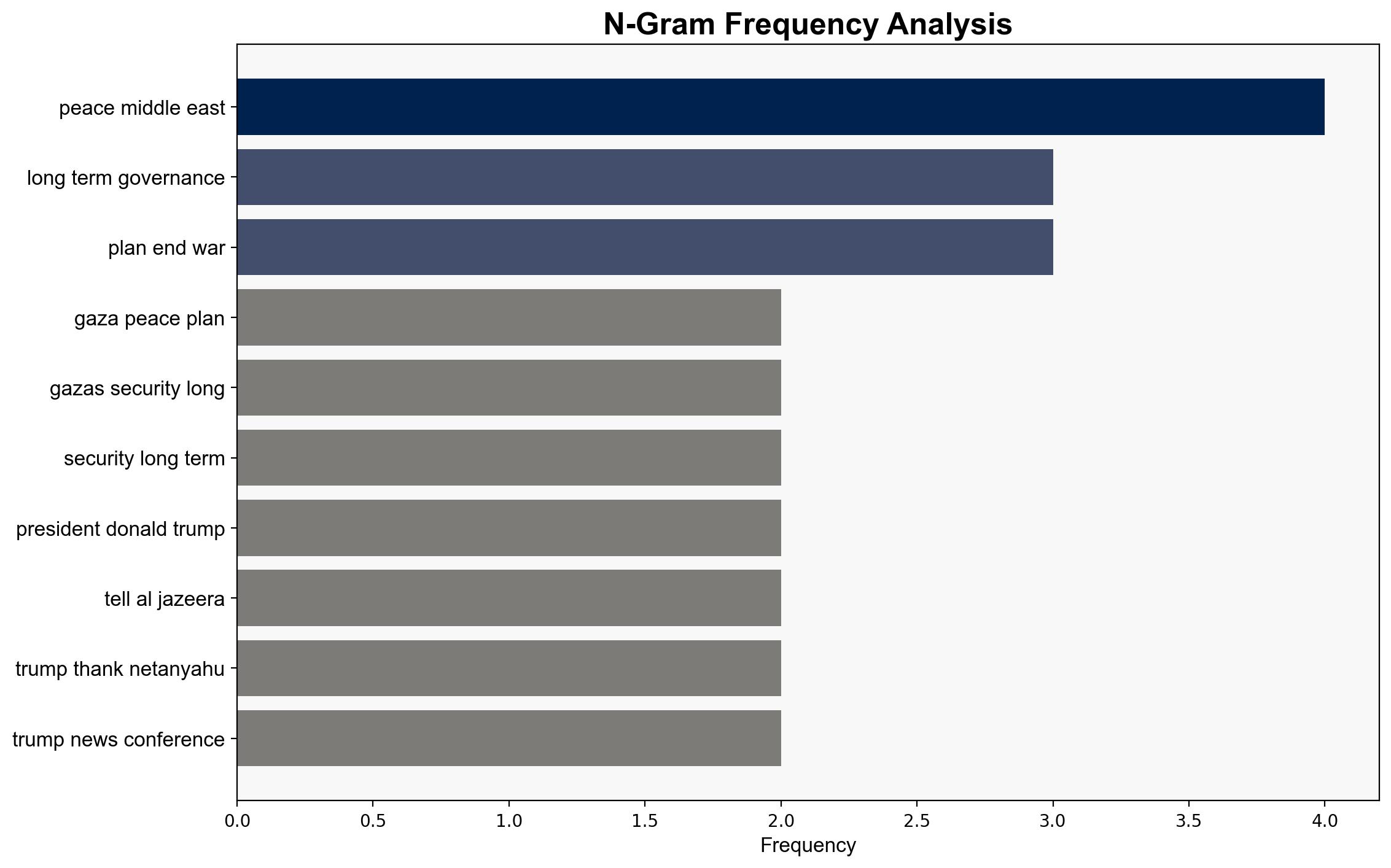Have Trump and Netanyahu really agreed on a Gaza peace plan Key takeaways – Al Jazeera English
Published on: 2025-09-30
Intelligence Report: Have Trump and Netanyahu really agreed on a Gaza peace plan Key takeaways – Al Jazeera English
1. BLUF (Bottom Line Up Front)
The most supported hypothesis is that the proposed Gaza peace plan lacks genuine consensus and operational feasibility, primarily due to divergent interests and the absence of key stakeholder buy-in. Confidence level: Moderate. Recommended action: Engage in multilateral dialogues to address underlying tensions and ensure broader regional support.
2. Competing Hypotheses
Hypothesis 1: Trump and Netanyahu have genuinely agreed on a comprehensive and actionable Gaza peace plan. This hypothesis suggests that both leaders have aligned interests and have secured necessary regional support to implement the plan effectively.
Hypothesis 2: The agreement on the Gaza peace plan is superficial, primarily serving political interests without substantial groundwork or stakeholder engagement. This hypothesis posits that the plan lacks the necessary buy-in from critical parties, such as Hamas and other regional actors, making its implementation unlikely.
Using the Analysis of Competing Hypotheses (ACH) 2.0, Hypothesis 2 is better supported due to the lack of explicit commitments from key regional players and the absence of detailed implementation mechanisms in the source text.
3. Key Assumptions and Red Flags
Assumptions:
– Hypothesis 1 assumes that Trump and Netanyahu have the influence to secure regional cooperation.
– Hypothesis 2 assumes that regional actors, particularly Hamas, are not aligned with the plan.
Red Flags:
– The absence of explicit statements from Hamas or other Palestinian factions indicates potential resistance.
– The reliance on a “new international body” and “technocratic leadership” without clear operational details raises feasibility concerns.
4. Implications and Strategic Risks
– **Geopolitical Risks:** Failure to engage all stakeholders could exacerbate regional tensions and undermine peace efforts.
– **Economic Risks:** Prolonged instability in Gaza may deter investment and economic development in the region.
– **Security Risks:** Inadequate demilitarization and security measures could lead to renewed hostilities.
5. Recommendations and Outlook
- Initiate inclusive dialogues involving all relevant parties, including Hamas, to foster genuine consensus.
- Develop a detailed implementation roadmap with clear roles and responsibilities for involved entities.
- Scenario-based projections:
- Best Case: Successful multilateral engagement leads to a sustainable peace agreement.
- Worst Case: Breakdown of talks results in escalated conflict and regional instability.
- Most Likely: Partial progress with ongoing negotiations and intermittent tensions.
6. Key Individuals and Entities
– Donald Trump
– Benjamin Netanyahu
– Hamas
– Tony Blair
7. Thematic Tags
national security threats, counter-terrorism, regional focus, geopolitical dynamics





